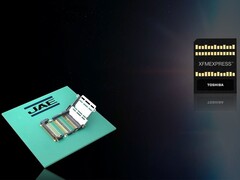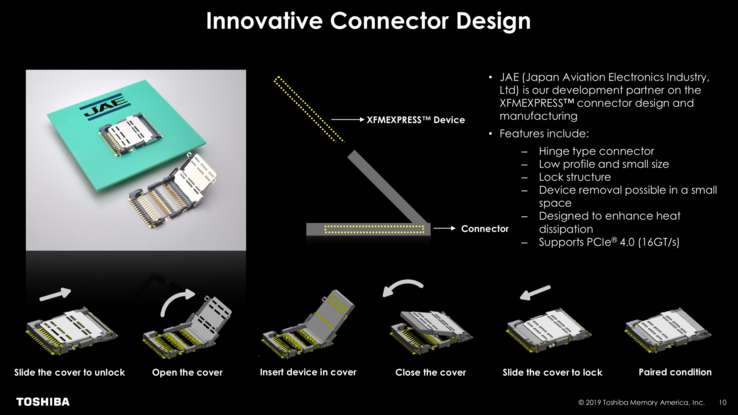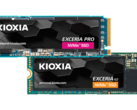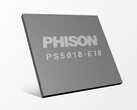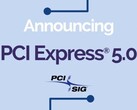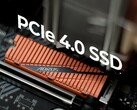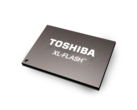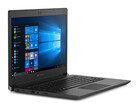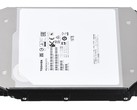NVMe SSDs are currently the fastest storage solutions for mass consumer computers, and Toshiba believes the standard can now be integrated with more compact, ultra-mobile devices like smartphones, IoT devices and embedded systems through the new XFMEXPRESS form factor unveiled at the 2019 Flash Memory Summit event.
While the XFMEXPRESS SSDs will be comparable in size with the microSD card standard, measuring in at just 0.55 x 0.70 x 0.05 inches, the mounting system will not be as simple since users will still need to open up the device and replace the NVMe cards. As far as performance is concerned, the new form factor will support Gen 3 and Gen 4 PCIe standards in two/four-lane configurations with NVMe 1.3 protocols. Toshiba claims that the first XFMEXPRESS cards will theoretically offer bandwidths close to 4 GBps, and the next gen may bump the speeds up to 8 GBps.
Compared to the current M.2 form factor, the XFMEXPRESS standard is designed to offer a tool-free installation via a more elegant connector that includes a hinge mechanism developed in collaboration with JAE (Japan Aviation Electronics Industry Ltd.). Installing a new NVMe card is very simple: users just need to slide the metal cover, open it up, insert the NVMe card, close the cover and slide it back in. The metal cover also serves as a passive cooling system.
It is still unclear when this new form factor will hit the market and which brands will support it, but, since Toshiba is the one pushing it for commercial launch, this should happen by 2020, especially considering that PCIe 4.0 will be a short-lived standard. Smartphones would most likely be the devices benefiting the most from of this standard, bridging once again another gap between computers and mobile devices.
Loading Comments
I first stepped into the wondrous IT&C world when I was around seven years old. I was instantly fascinated by computerized graphics, whether they were from games or 3D applications like 3D Max. I'm also an avid reader of science fiction, an astrophysics aficionado, and a crypto geek. I started writing PC-related articles for Softpedia and a few blogs back in 2006. I joined the Notebookcheck team in the summer of 2017 and am currently a senior tech writer mostly covering processor, GPU, and laptop news.
> Expert Reviews and News on Laptops, Smartphones and Tech Innovations > News > News Archive > Newsarchive 2019 08 > Toshiba intros new XFMEXPRESS form factor for PCIe NVMe SSDs
Bogdan Solca, 2019-08- 7 (Update: 2019-08- 7)




